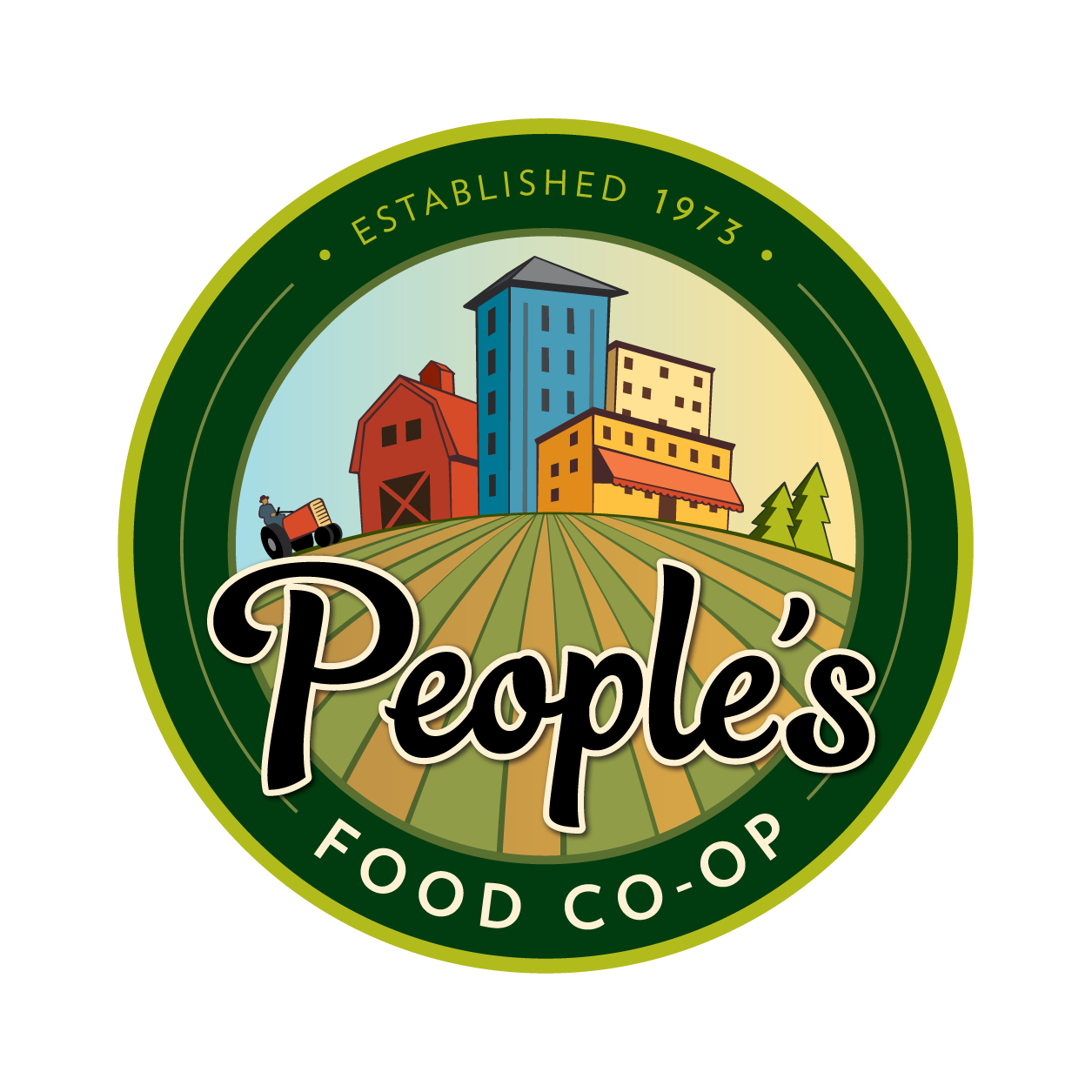American Hazelnut Company
“When we were first starting out,” Brad Nimcek of the American Hazelnut Company (AHC) remembers, “I was visiting local groceries, pitching our product. I walked into People’s Food Co-op in La Crosse and said to the first staff person I met: ‘Who should I talk to about getting our hazelnut oil into PFC?’ The young man, Ed Johnson, replied, ‘That would be me.’ I told Ed about our product. He heard me out and said: ‘Yes, we’re in.’ I love working with co-ops. You’ll often have that experience of dealing with real people that you don’t get at the big retailers.” This was in late 2016. AHC has supplied both PFC stores with hazelnut oil since that time.
In mid-May, People’s Food Co-op visited Kathy Crittenden and Kelvin Rodolfo, hazelnut growers and suppliers to AHC. Crittenden and Rodolfo have about 100 hazelnut bushes in production. They are typical of growers for the company. There are 26 local growers and investors, and Brad figures about half of the growers are retired folks, growing hazelnuts and other produce for their own interest.
Kathy explains that their main crop is raspberries. They grow asparagus and herbs as well. They sell jams at the winter farmers’ markets in the area. They use organic practices but are not a certified farm.
Kathy Crittenden, Kelvin Rodolfo,
and Brad Nimcek of the American Hazelnut Company.
If it ain’t the squirrels, it’s the jays
The bushes are just beginning to set buds. “You start watching in the third week of August,” Brad says, “and harvest in September. Once they turn color, they produce an aroma. You can smell when it’s time to pick.”
“Squirrels are a problem for some folks,” Kathy says, “but for us it’s blue jays. Once we spot one jay, we rush out to harvest.”
After harvest, the nuts are left to dry for one to two weeks before they’re de-husked and separated from the chaff. This takes equipment and “all this equipment costs money,” Brad says. AHC is not a big company, and it can’t match the equipment investments of the big Oregon growers.
Most U.S. hazelnuts are grown in Oregon. Brad notes: “In Oregon, they grow hazelnuts like California grows almonds. It’s a monoculture. They aggressively prune the hazelnut bushes to have a one-stem plant—a tree. They shake the nuts from the plant and vacuum them from the ground.”
Although hazelnuts grow well in the Midwest, production numbers are nowhere near as high as in Oregon. Midwest hazelnuts have excellent flavor, but the nuts are smaller. The number of acres devoted to cultivation in the Midwest is not impressive. About 70% of the nuts used in AHC oil comes from Oregon since local growers aren’t able to supply enough.
Local growers generally use hybrid plants—crosses of wild native plants and a European cultivar. Growers breed for plant hardiness, nut size, and other factors. The American hazelnut has greater cold hardiness than European varieties. Because it is a late-blooming tree, it is ideal for Wisconsin’s cold, unpredictable spring weather.
American hazelnuts are high in oil content and make excellent cooking oil. It is 81% oleic acid, making it one of the healthiest oils on the market
Retail market for American hazelnuts
Brad founded the AHC in 2012–13 as a way to bring hazelnuts to market. He had been a beekeeper and kept a farmers’ market stand selling honey, shiitake mushrooms, and maple syrup. With the help of the business incubator center in Gays Mills, Wisconsin, Brad had the opportunity to put together the AHC as a retail company for American hazelnut products. (In the global economy, much of Oregon’s bulk hazelnut production is sent abroad, while Americans eat imported hazelnuts from Turkey.)
AHC received assistance from the Upper Midwest Hazelnut Development Initiative, a joint project of Wisconsin and Minnesota universities. The universities provided technical support in getting the mechanics right—or at least under way. In addition to hazelnut oil, the AHC also markets bulk nuts and gluten-free hazelnut flour (also available at PFC—La Crosse).
Brad, along with the Upper Midwest Hazelnut Development Initiative, believes that hazelnuts will grow to be a vital part of local agriculture in the Upper Midwest. Hazelnuts are reputed to be the soybean of the tree world because of their high oil content. The plant is excellent for use in the region’s oak savanna ecosystems and has been found to be good for permaculture plantings. Brad reports he’s been approached by large-scale dairy operators looking to diversify.
In reflecting on the first seven years of the American Hazelnut Company, Brad said, “You have to be patient. We’re romantic enough to think we’re doing this for the planet. You need to invest in something beyond yourself.”


